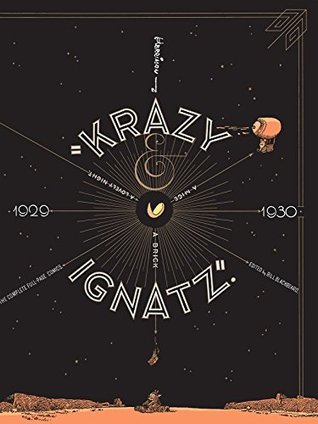What do you think?
Rate this book


Of special note to collectors, this is the period when Herriman was again liberated from the "grid" constraints of the mid-'20s and was able to compose his pages far more creatively, resulting in richer, more complex, more eye-pleasing compositions. Krazy Kat is a love story, focusing on the relationships of its three main characters. Krazy Kat adored Ignatz Mouse. Ignatz Mouse just tolerated Krazy Kat, except for recurrent onsets of targeting tumescence, which found expression in the fast delivery of bricks to Krazy's cranium. Offisa Pup loved Krazy and sought to protect "her" (Herriman always maintained that Krazy was gender-less) by throwing Ignatz in jail. Each of the characters was ignorant of the others' true motivations, and this simple structure allowed Herriman to build entire worlds of meaning into the actions, building thematic depth and sweeping his readers up by the looping verbal rhythms of Krazy & Co.'s unique dialogue.
120 pages, Paperback
First published May 8, 2003